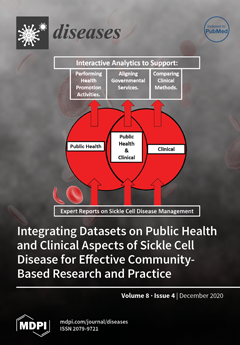Many Geriatric Health Services Facilities in Japan may have continued outpatient rehabilitation by taking measures against infection even during the state of emergency caused by Coronavirus disease 2019 (COVID-19). The present study aimed to determine differences in physical and psychological states in rehabilitation outpatients (age, 83.5 ± 8.4 years) at a Geriatric Health Services Facility between the pre- and post-nationwide state of emergency in Japan. Physical outcomes were assessed with gait speed (GS), timed up and go test (TUG), handgrip strength (HG), and maximum phonation time (MPT). We used the Japanese version of the five-level EuroQoL five-dimensional questionnaire (EQ-5D-5L) to assess patients’ quality of life (QoL) as the psychological state. The physical (GS, pre, 0.92, post, 0.92 s,
p = 0.875; TUG, pre, 14.09, post, 14.14 s,
p = 0.552; HG, pre, 19.42, post 19.70 kgf,
p = 0.807; MPT, pre, 13.6, post, 13.8 s,
p = 0.861) and psychological (EQ-5D-5L, pre, 0.73, post, 0.81,
p = 0.064) states of the participants did not change significantly between the pre- and post-nationwide state of emergency. This was likely due to the continuance of outpatient rehabilitation in accordance with the facility’s policy while taking adequate safety precautions against COVID-19 infection.
Full article





